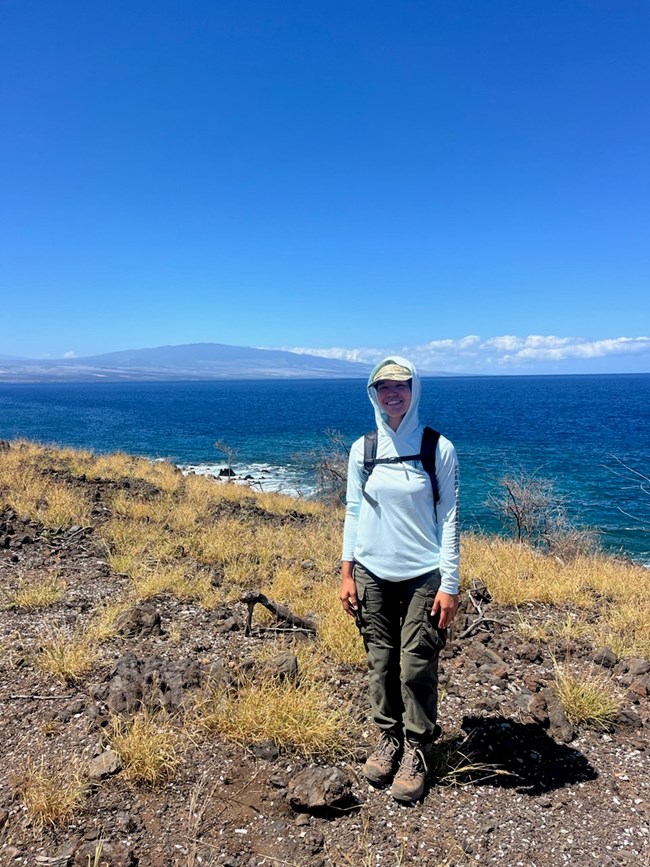Last updated: April 28, 2025
Article
Kilinoe Muraki-Burns: UH Hilo Intern Shaping the Pili Grass Revival at Puʻukoholā Heiau

NPS
What inspired you to pursue an internship at Puʻukoholā Heiau? Was there a specific moment or event that sparked your interest?
What inspired me to pursue an internship at Puʻukoholā Heiau, was the desire to pursue indigenous and place-based research. I was offered this opportunity through the PIPES (Pacific Internship Program for Exploring Science) internship program through UH Hilo, where I am currently attending. I was initially drawn to Puʻukoholā Heiau in particular after having a meeting with my now mentor, Leiokeko’olani Brown, who truly is an amazing representation of Native Hawaiians in science related fields. And that is something that I also aspire to do, so I was immediately drawn to this opportunity and place.
What is your background, and how have your skills or experiences helped you in your internship?
I have many people, places, and moments that contribute to my “background;” however, the one that has played a significant role in shaping my experience in this internship is being a Kanaka Maoli, an Indigenous person of Hawaiʻi. In Hawaiʻi, we are deeply connected to our ʻāina (land) and rely on this reciprocal relationship to sustain our lives. Because of this, it has always been natural for me to gravitate toward mālama ʻāina (caring for the land and environment), especially the land that raised me—Hawaiʻi Island. Through this internship, I was able to give back to Hawaiʻi Island, learn more about Kawaihae and Kohala, and explore the many significances of native species through a makawalu (multiple perspectives) lens, considering how our kūpuna (ancestors) might have viewed them.

NPS
Why do you feel it's important to dedicate your time to support our national parks?
I believe national parks are incredibly important. They are vital for preservingecosystems , butin Hawaiʻi, they’re also crucial for protecting intertwined cultural and natural resources. I cannot emphasize enough how vital these parks safeguard our ways of life, culture, and identity as the people of Hawaiʻi.
What did you find most rewarding about your internship work, and what tasks did that entail?
As an intern at Puʻukoholā Heiau National Historic Site, we undertook several kuleana (responsibilities) that contributed directly or indirectly to the pili grass (Heteropogon contortus) restoration project. Some of these responsibilities included digging holes for each individual pili plot to be planted, pre-watering the plots for at least a week before outplanting, gathering and harvesting mature pili for outplanting, and carrying out the actual outplanting process (we outplanted 321 individual plots). Additionally, we conducted regular maintenance of the irrigation system, rock-mulched each plot to ensure water retention, and recorded our observations and outcomes of the project. This work would not have been possible without my fellow intern, Dylan, the staff at Puʻukoholā Heiau, and the YCC high school interns who assisted us throughout the entire process.

NPS
Is there anything else you'd like to share about your experience?
Working with the National Park Service at Pu’ukohola Heiau has certainly changed my life for the better. This experience has guided my future career goals, and I have certainly considered wanting to work there post-grad from college. This is something that I will never forget, and I hope that my work with the park has also left a lasting impact on them and the ʻāina of Kohala and Kawaihae.
